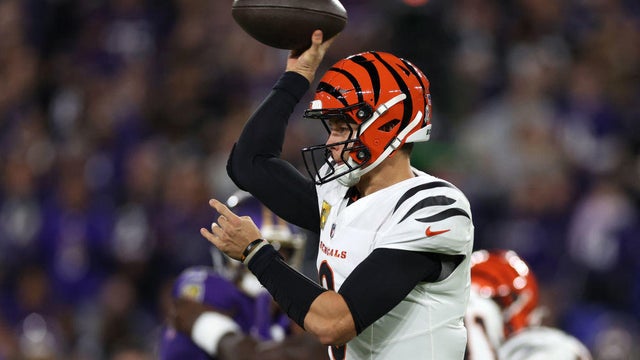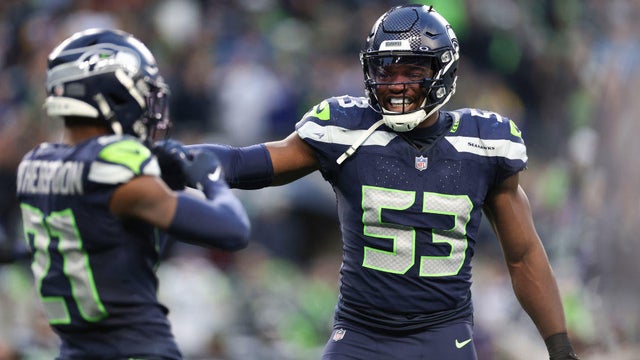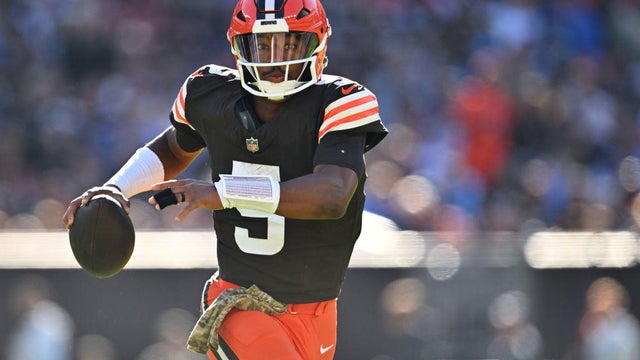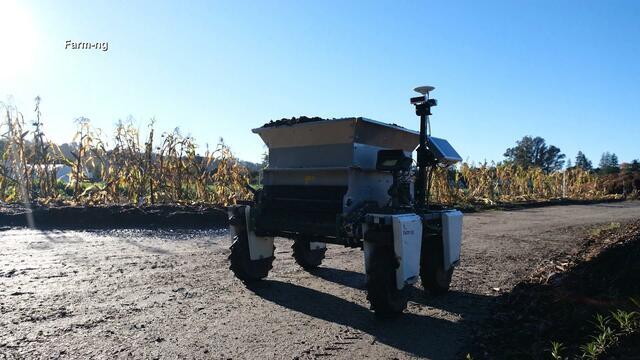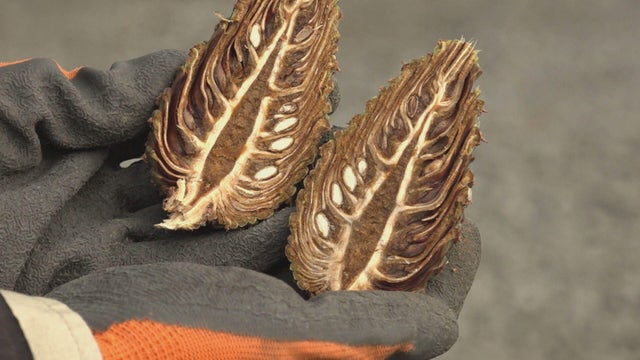How to shop for running shoes if you're a beginner
Since they (quite literally) carry you to the finish line -- be it chalked on the road for a marathon or a number on your treadmill display -- your running shoes are an important part of your running gear. Possibly the most important, so knowing what to look for when you shop for running shoes is essential.
If you're new to this whole running thing, you'd be forgiven for feeling overwhelmed by all the options out there. Are those features marketed by brands like Nike and Hoka really important? Do you need different running shoes for the outdoors than you do for a good treadmill workout?
We answer these questions and more below with our shopping guide that's perfect for beginners in need of that ideal pair of running shoes. So read on, try on, lace up, and get ready to kickstart your newfound running obsession.
A quick guide to the best running shoes for beginners
If you're just eager to order a pair and get started, here's a quick list of the running shoes we recommend in the guide below.
- Best running shoes for wide feet: Brooks Ghost 16, $140
- Best running shoes for narrow feet: Nike Winflo 11, $68 and up (reduced from $105)
- Best running shoes for mixed terrain: Nike Pegasus Trail 5, $91 and up (reduced from $150)
- Best dedicated trail running shoes: Saucony Xodus Ultra 3, $160
- Best road running shoes: Nike Pegasus 41, $140
- Best track running shoes: Adidas Adizero Prime SP 3, $180
- Best running shoes for flat feet: Asics Gel Kayano 31, $165
- Best running shoes for high arches: New Balance Fresh Foam X More v5, $155
- Best high-drop running shoes: Puma Deviate Nitro 3, $160
- Best low-drop running shoes: Hoka Bondi 8, $165
- Best zero-drop running shoes: Altra Escalante Racer 2. $140
- Best lightweight running shoe for daily runs: Adidas Adizero SL 2, $130
- Best lightweight trail running shoe: Merrell Morphlite, $100
- Best lightweight racing shoe: Nike Alphafly 3, $285
- Cushiest daily running shoes: Hoka Clifton 9, $145
- Cushiest trail shoes: Hoka Stinson 7, $170
How -- and why -- your running shoes should fit
If you take away one thing from our guide on choosing running shoes, it should be a new pair of running shoes. But in all seriousness, your biggest takeaway should be to prioritize shoes that fit comfortably first and foremost. Increased footwear comfort has been linked in medical studies to better running performance. If you're already a runner, you may call this running economy, but either way, it's just how your body holds up during a run. This includes how much energy you use, how quickly you might run out of breath, and generally how you feel during and after exercising: important stuff.
But a good pair of running shoes that fit well won't just help you feel better -- it will also help to reduce the risk of discomfort or even injury.
"Some of the most common running injuries that can arise from improper footwear include: plantar fasciitis, ankle sprains, shin splints, [hip, knee, or ankle] pain, back issues, and imbalances," says Andrew Blakey, a personal trainer and director of Your Future Fitness.
"The list goes on, which is why it's so crucial to ensure you select the shoe style that's appropriate for you and your body mechanics," Blakey says.
Beginner's tips to shop for running shoes
You know the why, now let's get into the how of it all. This beginner's guide will walk (or run) you through some of the most important things to know about shopping for the ideal pair of running shoes.
1. Know what the perfect fit should feel like
You'll find that comfort and fit are two of the most important parts of finding the right pair of running shoes. Anything less will only set you back in the long run.
"Shoes that are too tight or too loose won't provide the necessary support and comfort," Alvarez says. "Shoes that are too small may cause blisters, bunions, and other foot injuries. Shoes that are too large, on the other hand, may lack the necessary stability and cushioning."
Look for something that promises a snug fit. Features to look for include a mesh or knit upper that can mold to your foot without pinching or constricting it. If your feet are either wider or narrower than standard width, look for brands that offer wide or narrow size options.
Even if you know your shoe size, keep your eye out for size charts when comparing running shoes. Some brands are known for running small (Nike), while others have a reputation for running large (New Balance). So the right size in one brand might be the wrong size in another.
If you're unsure of your exact size or have dealt with discomfort in the past from shoes that don't fit, fret not; one 2018 study found that more than 60% of people may be walking around in shoes that simply aren't the right fit.
If you want a second opinion on the number printed on those old shoes you've been wearing forever, there's an easy at-home trick you can try. First, tape a piece of paper down to the floor. Place your foot flat on the paper and carefully trace an outline all the way around. Then, use a ruler to draw straight lines connected to the outline, making a box. Measure the length and width of that box, and use those numbers to find your foot on a sizing chart.
This can give you a good idea of what to look for in running shoes, size-wise, but we recommend speaking to a podiatrist if you're still unsure.
Shop running shoes by fit
- Best running shoes for wide feet: Brooks Ghost 16, $140
- Best running shoes for narrow feet: Nike Winflo 11, $68 and up (reduced from $105)
2. Think about terrain
The great thing about running is that you can do it anywhere. Well, not anywhere, but just about. Sure, there are outdoor and indoor running tracks to seek out, but you can also run on park trails, roads and sidewalks around town, or just stay home and work up a sweat on the treadmill.
"Different terrains call for different types of shoes," says Dr. Gregory Alvarez, a podiatrist at the Ankle and Foot Centers of America.
"If you plan on running on roads or trails with uneven surfaces, look for shoes with rubber outsoles that provide good grip and traction. If you're an avid trail runner, look for shoes that are designed specifically for off-road running," Alvarez says.
Going for a run outdoors means exposing yourself -- and your shoes -- to a more unforgiving experience, according to Blakey.
"This means you may want additional padding or a softer shoe [for the outdoors] in order to absorb some of these additional forces," Blakey says.
Look for gel or foam padding that will soften your run if you're routinely outside. Durability is also an important feature, so look for strong rubber outsoles that will last.
Shop running shoes by terrain
- Best running shoes for mixed terrain: Nike Pegasus Trail 5, $91 and up (reduced from $150)
- Best dedicated trail running shoes: Saucony Xodus Ultra 3, $160
- Best road running shoes: Nike Pegasus 41, $140
- Best track running shoes: Adidas Adizero Prime SP 3, $180
3. Features that matter most: Heel-toe drop and arch support
"The height of the heel-toe drop -- also known as heel lift -- can affect your gait and your body's ability to move more efficiently while running," Alvarez says. "Generally, a higher heel-toe drop is better for people who supinate and a lower one is better for those who overpronate."
Overpronation or underpronation occurs when your foot rolls too far inward or outward, respectively, as you walk. A shoe with good arch support can help correct your gait while a tall stack of foam can help cushion the impact of each step. "Arch support is essential for . . . providing the necessary stability while running," Alvarez says. "If you have flat feet or high arches, look for shoes with extra arch support that provides good cushioning and shock absorption."
The heel-toe drop refers to how much higher the foam layer is under your heel compared to under your toe. A higher heel-toe drop means the heel has a taller stack of cushioning underneath it than your toe. A lower heel-toe drop means the foam layer is a bit flatter and more consistent all the way across.
The best choice for you comes down to which running injuries you're prone to and which part of your foot hits the ground first when you run. If you tend to feel most soreness in your calves and feet after a run, a higher drop (more than 8mm) can redistribute shock away from those areas. A high drop is also good for heel strikers as this offers extra cushioning under the heel where you need it while thinning out at the toes so you have a better ground connection on your toe-off.
Meanwhile, a lower drop (5 mm or less) is ideal for runners who tend to feel pain or soreness in their knees or hips after a run. The low drop allows your ankle and lower leg to do most of the work moving your foot forward, taking the pressure off of your knees and hips. This is also the best option for midfoot or forefoot strikers as the flatter surface makes it easier for your foot to land and roll forward naturally.
Note that heel-drop is not the same thing as cushioning. You can find shoes with a tall stack of foam and zero drop, as well as shoes with minimal cushioning and a high drop.
Shop running shoes by heel-drop and arch support
- Best running shoes for flat feet: Asics Gel Kayano 31, $165
- Best running shoes for high arches: New Balance Fresh Foam X More v5, $155
- Best high-drop running shoes: Puma Deviate Nitro 3, $160
- Best low-drop running shoes: Hoka Bondi 8, $165
- Best zero-drop running shoes: Altra Escalante Racer 2. $140
4. Go lightweight
You may wonder if a heavier running shoe would be worth it for strength training. But that's not the case when it comes to running shoes. One 2020 study found adding weight to your shoe can have a negative impact on your overall running economy.
"Choose a lightweight shoe," Alvarez says. "Heavier shoes can cause fatigue and make it harder to run efficiently, so opt for a lightweight model that won't weigh you down."
Wearing something lighter can help you to feel more energized during runs. The streamlined designs of even the most budget-friendly running shoes are meant to reduce fatigue and increase speed.
The rule of thumb is that a running shoe is lightweight if it weighs about eight ounces or less. This is by no means a hard rule as weight will vary slightly even among different sizes of the same shoe. But when shopping, it's safe to assume that the further you go above eight ounces, the bulkier a running shoe will feel.
Shop running shoes by weight
- Best lightweight running shoe for daily runs: Adidas Adizero SL 2, $130
- Best lightweight trail running shoe: Merrell Morphlite, $100
- Best lightweight racing shoe: Nike Alphafly 3, $285
5. Don't ignore good cushioning
Last but certainly not least, look for running shoes with ample cushioning to keep you comfortable as you move. Whether you're hitting the rubberized ground of a running track or jumping on the treadmill for shorter workouts, you want something well-padded that matches your foot type.
"Good cushioning is essential for providing the necessary shock absorption when running, especially if you have high arches or flat feet," Alvarez says about running shoes with cushioned support. "Look for shoes with supportive midsoles and extra cushioning to reduce your risk of injury."
When shopping for running shoes, it's common to come across patented tech marketed as providing a high level of comfort. But you really just want to look for something with a tall stack of foam (like almost any Hoka running shoe). You can also try running shoes that use premium materials to better absorb shock, like the gel-infused foams from Asics or the nitrogen-injected foams from New Balance.
Shop running shoes with great cushioning
- Cushiest daily running shoes: Hoka Clifton 9, $145
- Best cushioned running shoes for flat feet: Asics Gel Kayano 31, $165
- Best cushioned running shoes for high arches: New Balance Fresh Foam X More V5, $155
- Cushiest trail shoes: Hoka Stinson 7, $170
Treadmills vs. outdoor running: Do you need different kicks?
"While you can wear the same shoe for both running inside on a treadmill as you could outside, there are some additional things you may want to take into consideration when determining if you'd like to use the same shoe for both," Blakey says.
One of those key points is the difference in terrain. The outdoors can be a lot more unpredictable, with uneven terrain and hidden little hazards like stones or jagged bits of asphalt that can wear down your shoes.
Blakey listed traction and toughness alongside terrain as the three factors that matter most when comparing outdoor tracks and paths to your treadmill.
"Running outside typically involves running on surfaces that may be wet or slippery which could require additional tread on the bottom of your shoe in order to stay safe and keep your footing," Alvarez says.
"Given the unforgiving nature of running outside (pun intended), you're also going to wear out your shoes much more quickly than running inside, which is why you may want to consider a shoe that's either made with higher quality materials or choose to replace your shoes more often," Blakey says.
And how often is more often?
"Running shoes can typically last between 300 [and] 500 miles according to Runners World but if you're running outside, you can expect it to be on the sooner side," Blakey says. "If you're running inside, you may be able to get an extra 100 miles out of them."
What went into our running shoe shopping guide for beginners
- Expert recommendations: We let the experts on running shoes guide us down the path of helpful accuracy when putting this beginner's guide together.
- Scientific research: Science is anything but static or set in stone, so we made sure to back up our research with relevant studies related to the science of running.
- Your needs: We focused on the different needs that newcomers to the world of running shoes might prioritize, from where you choose to run to how your body does the running, to make sure nobody feels left out.


